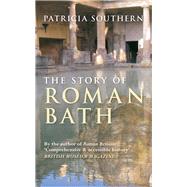The Story of Roman Bath

The Story of Roman Bath
- ISBN 13:
9781445643793
- ISBN 10:
1445643790
- Edition: Reprint
- Format: Paperback
- Copyright: 01/15/2015
- Publisher: Amberley Publishing
Rent
Sorry, this item is currently unavailable.
Note: Supplemental materials are not guaranteed with Rental or Used book purchases.
Extend or Purchase Your Rental at Any Time
Need to keep your rental past your due date? At any time before your due date you can extend or purchase your rental through your account.
Summary
When the Romans built the bath-and-temple complex of Bath in the late first century AD, they called the place Aquae Sulis, the waters of Sulis, a British deity who was equated with the Roman goddess Minerva. It was unlike any other town in Roman Britain, and it had no specific town status, compared to nearby Cirencester, which was a chartered town set up as a tribal administrative centre. All classes of people came to Aquae Sulis, to visit the temple of Sulis Minerva, the hot springs and the Great Bath. Soldiers on sick leave came to convalesce; Romans, Britons and slaves recorded their visits on various inscriptions since discovered during archaeological excavations. Gaius Calpurnius Receptus, a priest, was commemorated by his widow; Priscus, a stonemason from Chartres in Gaul, may have repaired some of the buildings; Vettius Romulus and his wife mourned the loss of their three-year-old daughter, Successa Petronia.Following the Romans’ departure, from the fifth and sixth centuries the rise of Christianity ultimately caused the decline of pagan worship, and as the old gods were neglected, so were the buildings of Aquae Sulis, which disappeared under an accumulation of silt and mud. The baths and the temple of Sulis Minerva were rediscovered in the eighteenth century and the Roman baths that we see today were rebuilt by the Victorians. Patricia Southern’s history charts the rise and fall of Roman Bath and examines the baths as they are today, part of a major World Heritage Site.






